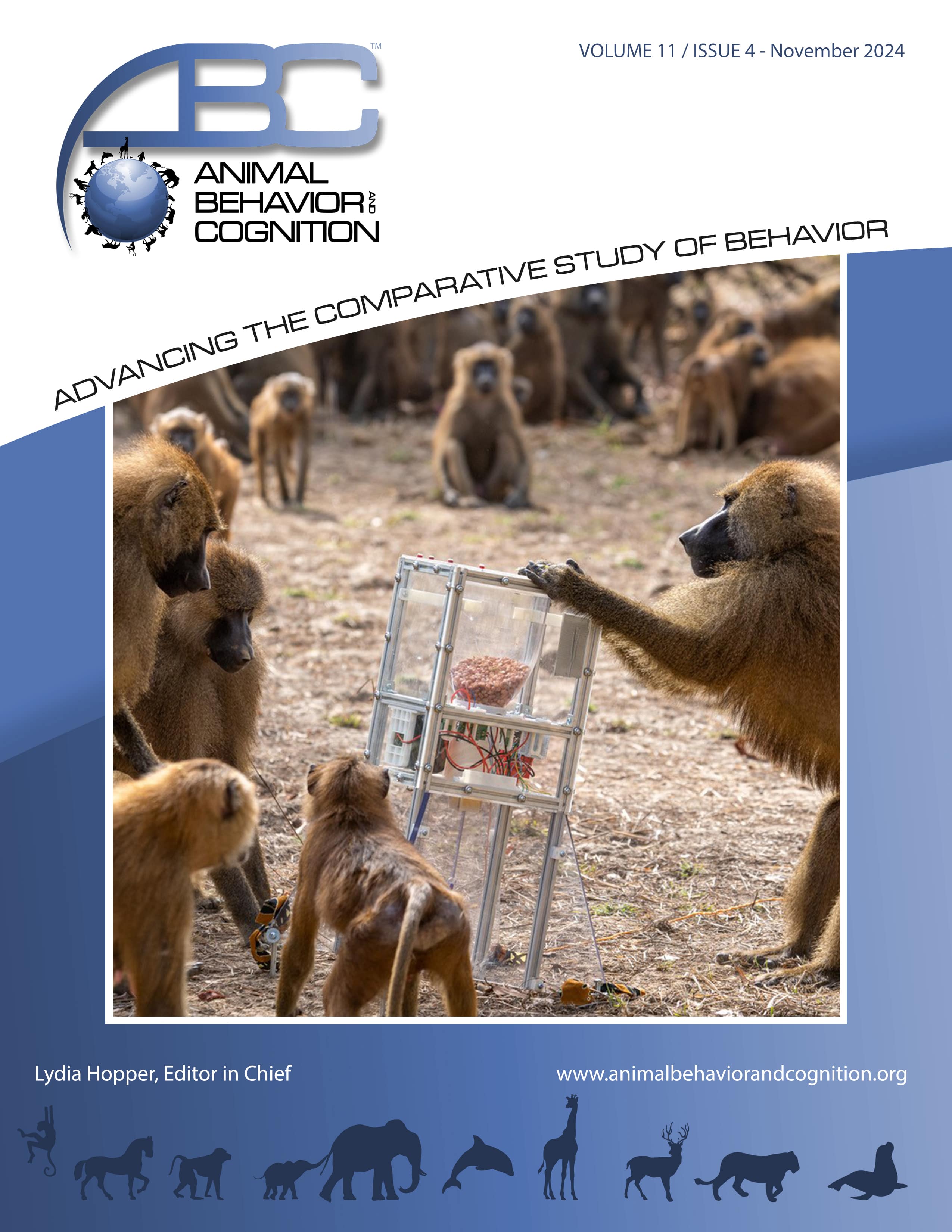Vol 11, Issue 4, November 2024
Signaler-Receiver "Exchangeability" Promotes Information Exchange in Animal Communication
Citation
Francescoli, G., & Hare, J. F. (2024). Signaler-Receiver "Exchangeability" Promotes Information Exchange in Animal Communication. Animal Behavior and Cognition, 11(4), 432-329. https://doi.org/10.26451/abc.11.04.06.2024
Abstract
Signals that inform prospective receivers of potential contingencies associated with the signaler or its environment may be innate, or may rely upon repeated association between signal production and a context relevant to the receiver, or theory of mind, such that signalers and/or receivers infer the state or contextual situation communicative partners find themselves in. While theoretical discourse on the information content of signals has focused on the coevolution of signalers and receivers as distinct entities, the fact that individuals often act both as receivers and signalers in similar communicative contexts over the course of their lives presents the possibility that signals emitted in a given context may reflect the signaler's own experience as a receiver in the same or similar contexts. This process, which we term “Exchangeability,” would allow signalers to encode appropriate information in signals and receivers to extract meaningful information without conditioning or recourse to theory of mind. We propose that Exchangeability readily accounts for the expression of true communication, where both signalers and receivers benefit, eavesdropping, where receivers alone benefit, and manipulation, where signalers benefit at the expense of receivers, thus providing a previously overlooked mechanism via which information can be encoded and decoded in animal communicative exchanges.
Keywords
Animal communication, Exchangeability, Information, Meaning, Semiosis, Signaler-receiver
